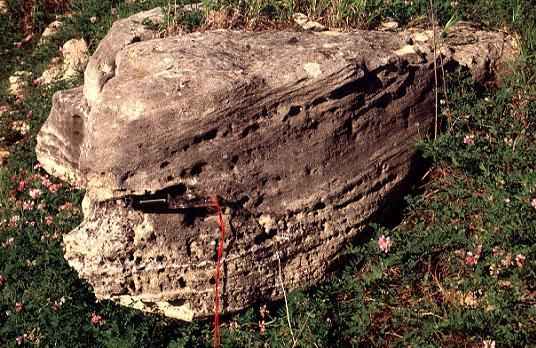
Sequestering CO2
CO2 sequestering or removing CO2 from the atmosphere and storing it is envisioned in the Kyoto Protocol.
Sequestering CO2 is not a new process, the atmosphere that we have today is vastly different from the one that the earth once had. There used to be far more CO2 in the atmosphere than there is today. Vast amounts of CO2 have been removed. There are two processes. Firstly plant material has removed a large amount of CO2 by photosynthesis, secondly a large amount of CO2 has been converted to carbonates by sea creatures and stored on the ocean floors. This is not released back into the atmosphere until tectonic plate movement sub ducts this material and it is released by volcanoes. If the primitive atmosphere was largely CO 2 now it is about 77%N and 21%O.
Driving through Kansas for example and seeing the road cuts soon makes you realize that a vast amount of CO 2 have been sequestered in the form of limestone on the ancient sea beds that were once part of the area. This removal of CO2 from the ancient atmosphere has helped created the O2 rich atmosphere that we have today.
Today we can still remove CO2 from the atmosphere by sequestering it by managed processes. There are many methods to sequester CO2 such as pumping the CO2 into depleted oil and gas wells, saline formations or coal beds. However the process is expensive because the CO2 needs to be separated from other exhaust gases, in fact it would approximately double the price of electricity from a coal fired station.
However the entire sugar crop of Cuba is equal to the CO 2 produced from one coal fired 1,000 MW power station. The idea that vegetation can absorb the CO2 released from fossil fuels is nonsense.
